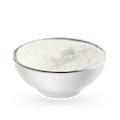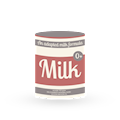MAIN INGREDIENTS
Egg waffle is a popular Hong Kong delicacy consisting of egg whites and yolks, milk, butter, sugar, flour, and salt. It is characterized by its puffy visual appearance and a pull-apart texture. These tiny treats are traditionally sold throughout Hong Kong by street vendors who prepare them in special pans with small, round cells.
Egg waffles can be consumed plain or paired with fruit and different spreads.
MOST ICONIC Egg waffle
View moreMAIN INGREDIENTS
Put chai ko is a traditional snack originating from Hong Kong. It consists of brown sugar, red beans, rice flour, and wheat starch or cornstarch. The red beans are cooked and mixed with flour, sugar, and water in a pan. The thick batter is then placed into a greased tin mold and steamed until done.
The snack is left to cool down and it's then taken out of the mold and served. This snack can be bought from street vendors, and in the past they would traditionally steam it in earthenware bowls, but nowadays it's mostly sold in plastic bags or aluminum cups.
MAIN INGREDIENTS
Maltose crackers are traditional snacks originating from Hong Kong. They were at the peak of popularity in the 1950s and 1960s, when maltose crackers were sold from street vendors. These snacks consist of only two ingredients – maltose syrup and saltine crackers.
In order to prepare maltose crackers, maltose syrup is sandwiched between two saltine crackers. Bamboo sticks are often pressed into the maltose so that the snack looks like a cracker lollipop. These inexpensive snacks are especially popular among children.
MAIN INGREDIENTS
Airplane olive is a traditional snack originating from Hong Kong. Also known as licorice olive, the snack is made from olives coated with licorice and various herbs that have been marinated in salt. The name refers to the fact that street vendors used to throw them to people on their balconies, who would in return throw their money down to the vendors.
The snack was created by a man called Uncle Kei, who was affectionately named Mr Airplane Olive.
TasteAtlas food rankings are based on the ratings of the TasteAtlas audience, with a series of mechanisms that recognize real users and that ignore bot, nationalist or local patriotic ratings, and give additional value to the ratings of users that the system recognizes as knowledgeable. TasteAtlas Rankings should not be seen as the final global conclusion about food. Their purpose is to promote excellent local foods, instill pride in traditional dishes, and arouse curiosity about dishes you haven’t tried.











